
kscarbel
-
Posts
1,114 -
Joined
-
Last visited
-
Days Won
8
Content Type
Profiles
Forums
Gallery
Events
Blogs
BMT Wiki
Collections
Store
Posts posted by kscarbel
-
-
I spent many years running COE & conventional Scanias on overnight express linehaul work in Australia. Most of these were 450hp V8's.
Fine trucks with very few vices. Our only complaint about them was the lack of an engine brake. Scania now has a very good hydraulic retarder mounted in the transmission that makes a Jake brake totally redundant.
That said, the only thing, apart from regular maintenance, was brake-lining replacement which was a result of the above.
If you get the opportunity to get a look inside a Mack V8 & the Scania side by side, you'll see some surprising similarities. In fact, according to my sources, Scania was contracted by Mack, to sort out some of the crankcase issues Mack V8's were suffering. Nice things like cracked main-bearing support webs & persistent breaking of main-bearing cap buttress bolts which leads to spun bearings etc. Some of these issues were the direct result of long steep grades at maximum revs on the engine brake in the high country in Tasmania.
Mick.
Scania never went with an engine brake because they have designed what is arguably the finest exhaust brake in the world. It even has earned respect from Jacobs.
But having said that, for those needing additional stopping power, the superb self-designed Scania retarder, integrally direct-mounted to the rear of the transmission, has been available from Scania for 20 years (since 1993) as an option and capable of bringing the world to a halt.
Scania Retarder interacts with the cruise control, exhaust brake and wheel brakes to provide total speed control at the touch of a button or a dab on the brake pedal.
Completely integrated with the cruise control, as well as with the service brakes and exhaust brake when cruising, a vehicle with the Scania Retarder provides automatic speed control up and down the hills.
Retarder braking is either initiated with a dab on the brake pedal or controlled manually with the lever on the steering column.The gap between cruising speed and downhill speed can be set in small steps using a button on the steering wheel.
When set to work automatically with the exhaust brake and the service brakes, service brake applications are reduced by up to 75 per cent and brake wear minimised.
-
 1
1
-
-
This marks the beginning of the end for the ADF's family of Mack RM-6866RS 6x6 tactical trucks. Originally ordered in 1981 and refurbished as late as 2004, the Australian Defense Force understood the meaning of "Built Like a Mack Truck" and got decades of service from their very prudent investment.
With the current wind down in U.S. Army truck purchases in mind, this would have been a nice deal for Oshkosh.
.
-
 1
1
-
-
Shephard Media / July 23, 2013
The Australian Department of Defense has contracted Rheinmetall MAN Military Vehicles (RMMV) to deliver up to 2,500 new logistics vehicle for the ADF at a cost of €1.1 billion (Australian $1.58 billion).
The DoD announced the contract on 23 July, which is part of Project Land 121 Phase 3B – also known as Project Overlander – that will provide about 2,700 protected and unprotected medium and heavy vehicles.
A contract has also been signed with Haulmark Trailers Australia for up to 2,200 trailers and specialist modules.
Phase 3B was listed as a ‘project of concern’ until 2011, when Rheinmetall MAN was down-selected and the programme was brought back on track.
According to the DoD the vehicles will include medium and heavy recovery vehicles; medium and heavy tractors; heavy integrated load-handling vehicles (self-loading hook lift trucks); and medium-weight tray variants (with cranes and tippers).
‘In a hard-fought contest, Rheinmetall MAN Military Vehicles Australia overcame rival bids from top European and American competitors thanks to a compelling proposal that met the customer’s demanding specifications in every category,’ the company said.
Deliveries will be ‘starting in 2016, with the contract due for completion in 2020,’ the company added.
Rheinmetall is expected to deliver vehicles from its 4x4 TGA medium military truck; 6x6 SX high mobility truck; and 8x8 HX extreme mobility truck series. These will replace the existing Unimog, Mack and Internatioal S-liner trucks.
Project Overlander first started in 2006 when a request for tenders was put out and a contract awarded to BAE Systems in 2007. However this was recalled amid a political dispute, and the project had to be restarted.
-
On 7/26/2013 at 0:09 PM, Chuck P said:
Some recent pics from 2011 fully decked-out.
They certainly have a unique sound to them.......almost like a V8 Mack.

They sound almost like a Mack because they essentially are the same engine. The Scania version's individual cylinder heads, different manifolds and muffling create a slightly different resonance.
-
- Popular Post
- Popular Post
-
A Ford gas-turbine, presumably the model A-707, was also installed in a C-800 cab-forward vocational chassis in 1966.
Prior to this truck, the earlier 705 gas turbine was operated in a C-Series 4x2 tractor. That truck has been preserved at the St. Louis Museum of Transportation (http://transportmuseumassociation.org/automobiles.htm).
.
-
 1
1
-
-
European Debut of Ford Gas Turbine
Commercial Motor / August 16, 1968
Ford Motor Co.'s announcement that the latest version of the US Ford 707 automotive gas turbine will be exhibited next month at the Commercial Motor Show, Earls Court, gives point to the forecasts made by Mr. Walter Manning, chief engineer of Ford Truck Product Engineering, in this country, that the turbine will take over from the diesel for heavy vehicle applications. And it highlights the fact that the brain power behind the design and development of the 707 has been supplied by Mr. Ivan Swatman, a British-born engineer.
Mr. Swatman will unveil the 707 at Earls Court in the same week that he describes the development of this and other Ford turbines in a most revealing and important paper at CIVI's Fleet Management Conference at the London Hilton.
The 375bhp Model 707 gas turbine made its domestic debut at the annual meeting of the American Trucking Association in Washington.
In the second of “The Next 10 Years" series, Mr. Manning said that by the mid-1970s the gas turbine would be in a favorable position, compared with the diesel, for applications to heavy vehicles requiring power outputs of 250/300bhp. And he forecast that units with outputs as low as 200bhp would eventually be acceptable on economic grounds for trucking and some non-trucking vehicles.
Designed to propel 35-ton tractor-trailer at speeds up to 70mph, the 707 is currently undergoing extended durability tests fitted in a W-1000 truck built by Ford of America. It saves about 2,000lb in weight compared with a diesel of comparable output and is said to operate at a fuel consumption equivalent to that of a diesel over a wide speed range. Moreover, it has a very low noise level.
The unit should cover 600,000 miles between major overhauls, and is easy to service with conventional tools. The only wearing parts of the major components comprise the turbine shaft and bearings.
Of particular importance for fuel economy, the 707 incorporates a regenerator in the form of two power-driven heat exchangers located between the turbine-driven compressor and the combustion chambers. The regenerator takes exhaust heat to preheat the incoming air, which reduces the amount of heat wasted in the combustion process. Combustion is continuous at temperatures of around 1,500/1,800 degrees F.
Fuel economy is also improved by the use of variable-pitch vanes, which direct the hot gases from the combustion chamber to the power turbine. Changes of pitch are made to accord with changes of power output.
The provision for varying the pitch of the vanes also enables the unit to be employed for overrun braking. A retarding force of up to 2801-ip is available from overrun braking at the touch of a pedal.
Because the lubricated components are isolated from the combustion chamber, oil consumption is negligible. There is no radiator and the compactness of the engine facilitates siting of the auxiliaries. It also gives greater latitude in cab design.
The compressor of the 707 operates at up to 37,500rpm, while the maximum speed of the power turbine is 31,650rpm. Reduction gearing gives an output-shaft speed of 3.000rpm.
Liberal use is made of castings to facilitate the economic use of high-grade materials in quantity production of the unit. The main block, bearing housing and end covers are nodular-iron castings. Commercially available cast-nickel alloys are employed for the turbine wheels.
Ivan Swatman. who is chief engineer of US Ford's turbine operations, is now an American citizen but was born in St. Albans, Hertfordshire, where he served an apprenticeship before taking a job as a development engineer with D. Napier and Son. He worked on experimental turbines with that company until moving to the USA as a project engineer on industrial turbines. Later he spent 6 years as project engineer on Solar Aircraft's industrial turbines before joining Ford at Dearborn in 1956. Since then he has been responsible for the design of all Ford's gas turbines.
-
Turbine Trucks in the Future
Commercial Motor / November 4, 1966
FORD OF AMERICA, convinced that the turbine engine will play an important part in trucks of the future, has announced a new 375 h.p. prototype research gas turbine engine designed specifically for a current truck model.
Called the Model 707 Turbine, the new engine made its debut at this month's annual meeting of the American Trucking Association in Washington, and has been installed in a U.S.-spec Ford W-1000 heavy truck.
Marketing of the 707 is not expected before the early 1970s and to advance the turbine design towards production stage, Ford has put a new gas turbine laboratory into operation at its Dearborn (Michigan) research and engineering centre.
Nearly 15 years' work by Ford engineers went into the new engine, which, claims Ford, provides numerous technical and operational advantages. "For instance," says the company," compared with a conventional truck engine of equivalent h.p., the new 707 weighs one ton less and occupies considerably less space. It can pull nearly 37 tons at up to 70 m.p.h."
-
In 1966, Ford fitted a production W-1000 6x4 tractor with a low pressure 375 horsepower model A-707 gas turbine and demonstrated it in North America and Europe (the UK and Germany).
Ford said they had “succeeded in overcoming the problems previously experienced in harnessing the gas turbine engine. The Ford A-707 engine is now in use in surface vehicles, land and water, in addition to industrial generator applications. It features a unique regenerative system which recaptures exhaust waste, a variable turbine nozzle and electronic controls”.
In 1970, following 18 years of gas turbine research, Ford opened a gas turbine engine plant in Toledo, Ohio to build and sell turbine engines for heavy truck, bus, marine and industrial usage. But Ford closed the plant in 1973, after continuing issues of turbine heating, and a devastating flood that shuttered a single-source supplier’s only plant. (Ford got out of the turbine business just as Mack and GM were beginning to use new ceramic materials to create second generation gas turbines)
Here’s an impressive Ford promotional video on the gas-turbine powered W-1000 COE.
Video: http://www.streetfire.net/video/1970-ford-turbine-big-truckswmv_2414779.htm
.
-
 1
1
-
-
-
What was the point of the twin engine cabover? Looks like it would be unwieldy in traffic.
bulldogboy
This goes back to World War II. In 1943, the Thorton Axle Company in cooperation with E&L Transport (of Dearborn, Michigan) produced just under 100 of these specialized T8 6x4 tractors, utilizing many Ford components, for pulling 63'6" long trailers loaded with B-24 heavy bomber fuselages and wing sub-assemblies.
Ford was one of the war-time producers of B-24 "Liberator" bombers, in addition to Consolidated Aircraft (of San Diego, California) who'd designed it.
The creation was branded "Thorco Dual Motors" and had two Ford (some say Mercury) 100 horsepower V-8 engines.
The B-24 sub-assemblies were carried between Consolidated's California and Fort Worth plants, between Ford's Willow Run (Michigan) and Douglas' Tulsa plant and North American's Dallas plant (or something close to that). There's also mention of them hauling something between Loudonville, Ohio and Buffalo, New York.
What was innovative about these truck is the two engines were installed on a roll-out sub-platform, for easy maintenance and replacement.
One engine drove the front-rear axle, and the other drove the rear-rear axle. So to finally answer your question, if one engine blew up, the driver could disconnect the two transmission's paired linkage and limp in to a Ford dealer on the remaining engine. The ability to readily get parts and service from Ford's national dealer network was another reason they went with off-the-shelf Ford parts.
These tractor-trailer combinations were 70-feet long and weighed about 50,000 pounds. The eighteen tires were all 8.25-20s and average cruising speed was 40 miles per hour.
-
 1
1
-
-
ZF's OEM unit has a long time relationship with Volvo Truck. Why don't you get some contact info from your colleagues in OEM sales and speak with Volvo Group Trucks Sales and Marketing Americas directly to resolve your questions?
-
looked at my boxes yesterday they are Monroe's', the originals were the Gabriel's The old one and the new look identical except for the brand same color yellow.
Mack used two vendors in theory, but typically sourced shocks from Monroe (who I preferred).
For example, in theory, the MH front shock could be 14QK373 (Monroe) or 14QK378M (Gabriel).
-
 1
1
-
-
Associated Press / July 24, 2013
Stockholm — Swedish truck and bus maker AB Volvo on Wednesday said sliding sales, weak foreign exchange rates and costs related to the rollout of new products resulted in net profit falling by more than half in the second quarter.
The company said net profit for April-June period was 2 billion Swedish kronor ($309 million), compared to 4.9 billion kronor last year. Total sales dropped by 12 percent to 72.7 billion kronor from 82.9 billion in 2012. Compared with the first quarter this year, sales increased by 25 percent.
The result was better than analysts had expected and the Volvo share rose by 3.7 percent to 96.7 kronor on the Stockholm stock exchange.
Volvo CEO Olof Persson said global demand for trucks was “relatively stable” except in Brazil where demand “continued to develop strongly” and India where the market is “considerably tougher.”
Sales by Volvo’s truck division dropped by 8 percent while its sales of construction equipment fell by 19 percent and bus sales were down 20 percent.
International demand for construction equipment remained weak, although “the decline in the key Chinese market slowed and demand stabilized at a lower level,” Persson said.
He said the bus market remained tough, with “significant pressure on prices.”
In the second quarter, Volvo introduced an all-new product range for its Renault Trucks brand, as well as a number of new Volvo trucks and the rollout of new products will continue in the third quarter.
“In the short-term, this impacts profitability since costs will continue to be high at the same time as we have the usual vacation shutdowns in the third quarter. However, once the new truck generations are out in the markets they will contribute to ensuring the group’s organic growth and competitiveness going forward,” Persson said.
-
The Financial Times / July 24, 2013
Heavy truckmakers are seeing signs of improvement in Europe as new models and tough new emission regulations encourage customers to bring forward purchases in spite of a still weak economy, results from Daimler and Volvo show.
Truck sales fell in Europe and the US in the latter half of last year amid worries over Europe’s debt crisis and cuts in US public spending. Now there are signs that truck markets on both sides of the Atlantic are on the mend, although growth remains tepid at best.
Economists view trucks as a useful barometer of global business confidence but national truck markets remain highly differentiated, in part because of differing emissions regulations.
“In Europe, the US and South America we see a certain stabilization,” Volvo Group chief executive Olof Persson, said, “with the caveat that changes can come very rapidly.”
Last week Volkswagen-owned Scania said order bookings in Europe continued to improve during its second quarter and it would increase its daily production rate. “The economic climate remains uncertain but there is a replacement need,” said Martin Lundtstedt, Scania’s chief executive.
Following a weak start to the year, Volvo’s sales and profitability bounced back in the second quarter and total truck deliveries climbed 35 per cent to almost 52,000 quarter on quarter, it announced on Wednesday.
Volvo’s new truck orders increased 39 per cent in North America compared with the second quarter last year, while European orders rose 13 per cent over the same period.
European truckmakers are launching new models ahead of the forthcoming 2014 Euro-6 emissions rules.
“Despite the unfavorable economic climate in parts of Europe, the high order intake over the past six months indicates that some customers are choosing to renew their truck fleets ahead of the new emissions legislation,” Volvo said.
Daimler’s total second-quarter truck unit sales were 1 per cent higher than a year ago, it announced on Wednesday, but earnings before interest and tax at its trucks unit fell 17 per cent to €434m compared with the same quarter a year ago, because of foreign currency headwinds and the still weak level of demand.
Daimler’s western European and North American truck orders also increased compared with the same quarter a year ago. The Stuttgart-based group expects truck sales in Europe to rise as the year progresses and it sees a stabilization in North America.
-
-
Ray Law – Ford of Canada General Sales Manager
“Ford’s 600 horsepower gas turbine is the culmination of years of intensive research. The Model 705 engine is basically two turbines in one and represents the result of a search by computer of hundreds of theoretical designs for the one best able to deliver diesel-like fuel economy throughout the operating range.
This supercharging approach results in a lightweight, compact engine containing smaller parts running at speeds up to 75,500 RPM. Air passages are considerably smaller than conventional turbines because Ford’s two-stage compression reduces air volume to one-sixteenth of its original volume.
The use of small rotating parts, cast aluminum and thin-wall cast iron housings results in an engine weighing about one-third that of a diesel engine of comparable power, an important factor in economical truck operation because weight savings can often be translated into added payload revenue.
Car motorist on the road with this truck would benefit too, by the fact that the turbine exhaust is odorless, clean, smoke-free and low in smog-causing unburned hydrocarbons.
Another benefit from the turbine powerplant is the low level of sound produced by the engine. It is no louder than that of an automobile at 50 feet away.
Because a turbine is most efficient when run steadily at full power, its best application is long-haul superhighway trucks which would travel non-stop for hours at a time.
Because turbines are relatively vibration-free, the truck chassis can be made of lighter metal, and the weight savings can again be translated into more payload.
Transmissions can be made simpler, and with fewer gears, because the turbine has greater torque at low speeds than a piston-type engine. Oil consumption is practically zero because the turbine has no crankcase and no oil contamination by “blow-by”. The gas turbine is air cooled and requires no coolant and radiator.
Maintenance is simple. The Ford turbine is designed so individual components can be replaced without disassembling the engine. When complete replacement becomes necessary, the entire engine can be quickly removed from the truck.”
Specifications - Ford Model 705 Gas Turbine
Weight: 1,475 lb
Shaft Horsepower: 560 @ 3,080 rpm
Rated Horsepower: 600 @ 3,080 rpm
Torque (ft.lb.): 955 @ 3,080 rpm
1,620 @ Stall
Fuel Type: #2 diesel
Burner Temperature: 1,750ºF
Exhaust Temperature: 660 ºF
-
 2
2
-
-
I’m certainly curious if “Big Red” still exists. The 1996 summer issue (Vol. 2, No. 3) of Ford Truckin' magazine states that “Big Red” was sold (or leased) to the owners of the Miss Bardahl Unlimited Hydroplane race team - minus the turbine motor (note the tow bar) - in the late 60's, and sold to Holman-Moody a few years later. The article has an interview with Jim Augenstein who was the Ford project manager and drove “Big Red”. He said Holman-Moody had sold it but didn’t identify the new owner.
Indeed eyewitness accounts state that Ford dealer Holman-Moody of NASCAR fame purchased “Big Red” and stored it first in a hanger at Charlotte (North Carolina) airport, and then at a nearby facility at least thru 1973 (these buildings were torn down around 2005 to make way for a new runway). The picture below shows “Big Red” in the initial Charlotte airport hanger (no mention of the two custom 40-foot trailers). I also read that Holman-Moody advertised the truck for sale during the 1970s.
Several publications have mentioned "Big Red" is languishing in poor condition at Ford’s Dearborn proving grounds. Did Ford repurchase the truck from Holman-Moody? Certainly, this truck is a rich treasure of America’s trucking history.
-
 2
2
-
-
Featuring a “flat floor” design like many of today’s premium COEs, the cab’s interior was 7’ wide with over 6’3” of headroom. The interior was lightly pressurized, with aircraft-style swivel reading lamps.
In the center of the rear cab wall was a large illuminated map of America’s planned super highway system for the 1970s.
Designed not to distract the driver, a TV set located above the windshield had power-adjustable vertical slats blocking the driver’s view of the screen so that it was only viewable from the off-duty driver’s adjustable lounge chair, which itself could be converted into a bed.
-
 1
1
-
-
-
To enter the cab, the driver actuated a single control handle recessed into the cab’s exterior behind a small door at ground level. The air cylinder-actuated door then automatically opened and an electric motor-driven retractable ladder extended downward from its horizontal storage position under the cab floor. Once inside, the ladder retracted again for enhanced aerodynamic efficiency.
The driver sat behind a single pedestal-mounted instrument panel and steering wheel, with six gauges mounted above the panoramic tinted windshield to monitor turbine conditions.
The contoured leather driver’s seat was power-adjustable fore and aft.
Large foot pedals were mounted flush with the floor and included a foot rest (dead pedal). The driver actuated the 5-speed Allison automatic transmission via column-mounted controls. And of course, Big Red featured cruise control.
Despite the futuristic design, Ford engineers strived to make all driver controls somewhat similar to those of conventional trucks.
To meet the non-stop operating conditions planned for this truck, Ford provided revolutionary comfort features included a dual-zone thermostatically-controlled HVAC system.
-
 1
1
-
-
Rare in 1964, both the 12,000 pound steer axle and 44,000 pound tandem bogie were air suspended. The drive axles were fitted with energy-efficient low-profile super single (duplex) tires.
Drivers commented favorably on the ultra-smooth front and rear air-ride suspension, even when cruising at 70 to 80 mph.
And extremely unusual for the time, the lightweight fiberglass-over-steel construction cab was mounted on a four-point suspension system (a feature not seen again in America until the Ford CL(T)-9000 in 1977, another cutting edge truck from Ford). Leaf springs at the front corners mounted fore and aft, and at the rear corners mounted laterally, so as to control cab pitch and sway, dampened road shock to reduce driver fatigue.-
 1
1
-
-
Impressed with Ford’s 300 horsepower gas turbine prototype of 1961, the U.S. Defense Department had contracted with Ford to develop a 600 horsepower version. Within two years of being awarded the joint Army-Navy contract, Ford engineers designed and built the model 705 gas turbine.
Developed for use in many military applications (e.g. tanks, minesweepers, hydrofoils and power generation), the model 705 gas turbine was very compact in size, measuring 49” by 44” by 38” (L x W x H).
The unique feature behind the model 705 turbine was supercharging, employed in two compression stages, a feature never before attempted by any manufacturer in gas turbine engines under 5,000 horsepower. This allowed for a lightweight, compact engine that used less air while delivering excellent fuel economy.
The two compression stage design was like having two engines in one. The truck could operate with only half the engine running. Then when required, the driver could activate the second stage to power refrigeration, cabin comfort items or other requirements. At the push of a reset button, the full 600 hp would be available, directed to wherever the drive system required it.
By 1964, at the same time Ford was courting the military’s turbine business, approximately half of the 41,000-mile Interstate Highway System was open for use. With it’s completion in sight, the U.S. Department of Commerce recommended the easing of length and load restrictions for commercial trucks. That decision motivated truck manufacturers to envision all-new truck designs for the 1970s and beyond.Ford’s answer was the breathtaking “Big Red”, a towering “tractor-trailer of tomorrow” test-bed for the 705 engine. With cutting edge aerodynamic styling and a plush cab designed for extended cross-country travel, “Big Red” allowed Ford to simultaneously test the gas turbine designs it was developing for the U.S. military while evaluating advanced heavy truck technologies for the coming decade and beyond.
Ford engineers and designers were extremely serious about the “Big Red” concept, and viewed it as a fully operational working truck accurately reflecting the needs of the future.
Designed to pull two 40-foot trailers at 70 miles per hour, a 270-gallon fuel capacity gave the truck a 600 mile range.
“Big Red” was 13 feet tall and 8 feet wide. From the front bumper to the rear of the second trailer, the double-trailer combination measured 96 feet long.
Big Red’s maximum rated gross combination weight rating was 170,000 pounds, an impressive figure in 1964.
Though 13 feet tall, the aerodynamic shape of the cab and trailer resulted in 37 percent less wind resistance than conventional cab-over-engine tractor-trailer combinations of the period (An important factor given that 50 percent of the horsepower needed to move a tractor-trailer at highway speeds is required to overcome wind resistance).
To optimize cab and trailer aerodynamics, Big Red’s cab was designed to be the same height as the trailer. The cab front is convex, and the cab sides are smooth with no protrusions.
The rear of the cab was concave so that the trailer could be close-coupled to the truck. By minimizing the tractor-trailer gap, drag caused by crosswinds and turbulence was reduced for a more aerodynamic profile and greater fuel efficiency.
Sitting eight feet above the highway behind a free-standing control console, the driver had unlimited visibility.
Test drivers reported that the turbine power-plant was virtually noiseless, and produced an odorless, non-toxic exhaust (which was safely vented 14 feet above traffic).
Years before brake regulations were created for heavy trucks, “Big Red” was built with three redundant brake systems. The brakes would pulse-lock automatically if the air pressure dropped below minimal levels.
-
 1
1
-
-
Ford executive vice president Charles H. Patterson said “This truck is a concept vehicle from our product research office. It is a test-bed in which advanced engineering ideas are proved out in actual over-the-road operation”.
While Patterson emphasized the Ford gas turbine truck is not planned for production, he said “it represents the thinking of our research engineers as to the best type of truck to make efficient use of the super highways and turnpikes of the future. For the first time, a truck has been designed with performance characteristics approaching those of passenger cars. This truck has the potential for economically hauling greater payloads than anything on the turnpikes today, and moving them farther and faster than present-day trucks”.
Ford envisioned huge double-trailer combinations like the “Big Red” concept which would travel 24/7 for maximum operating economy, rarely leaving the interstates except for driver changes, switching trailers and refueling.
-
 2
2
-


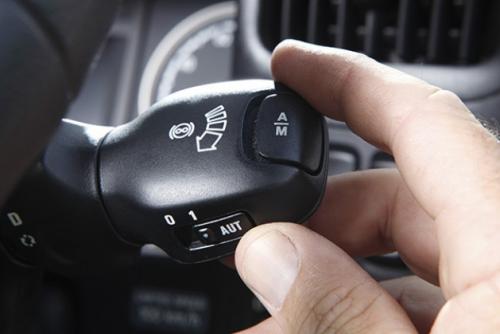
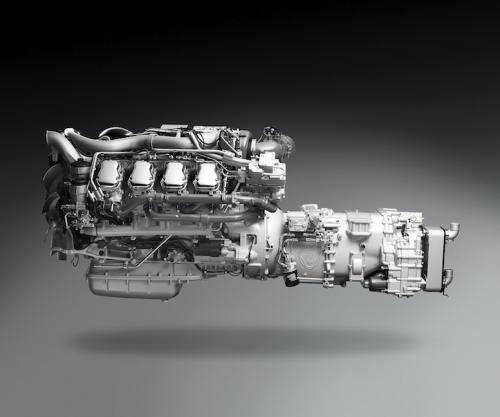
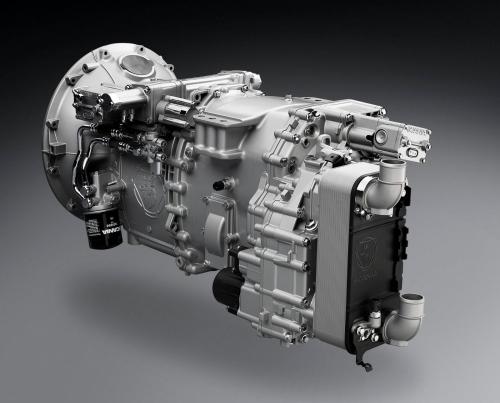
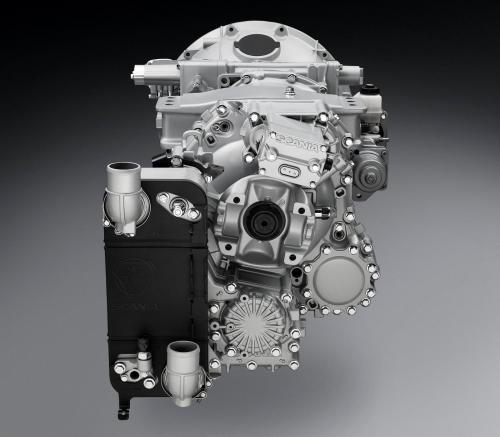
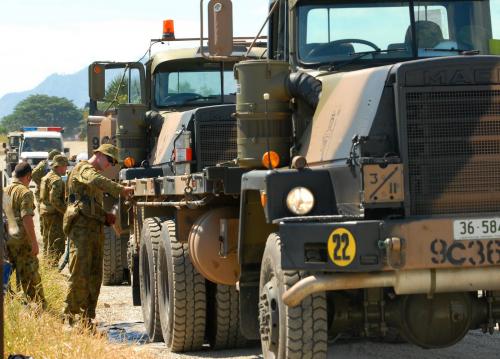
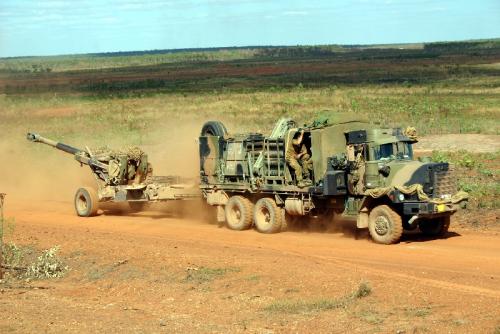
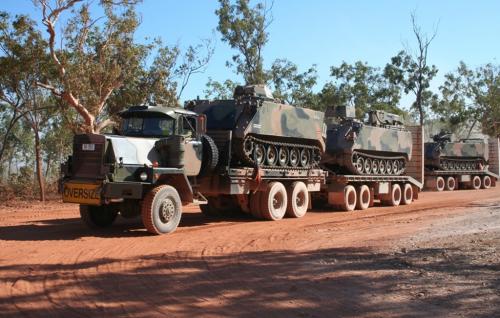
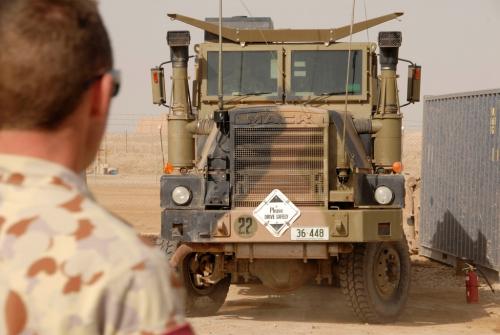
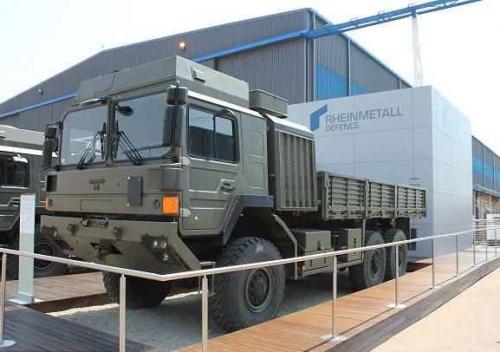
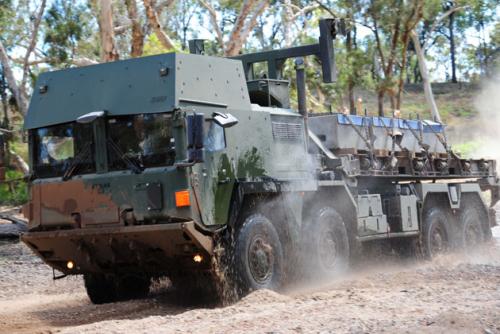
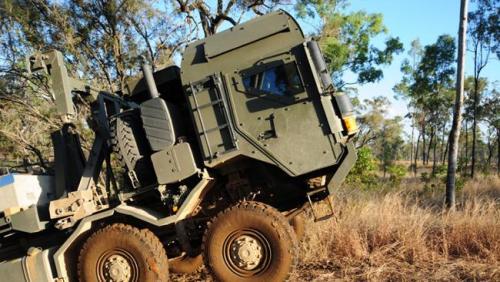
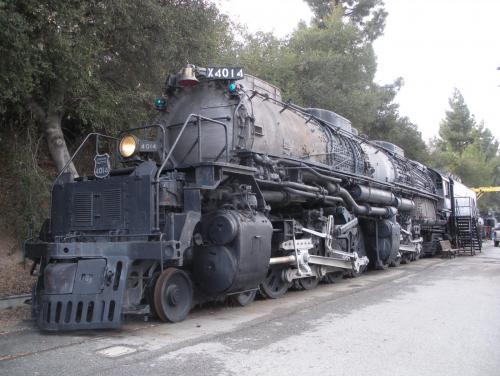
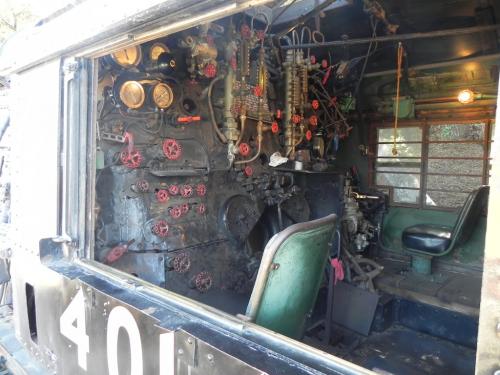
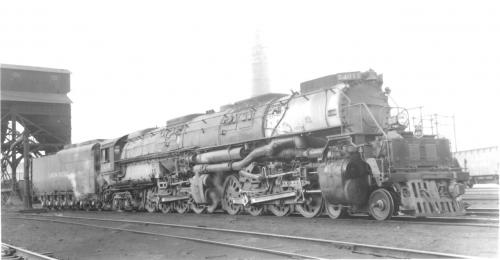
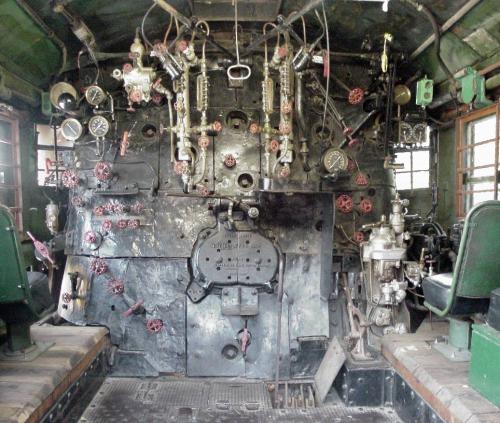
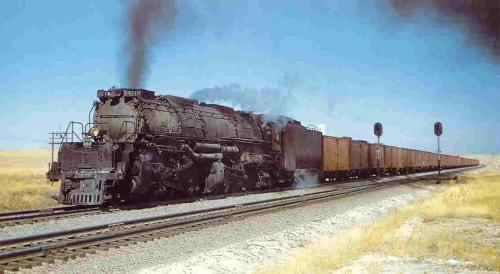
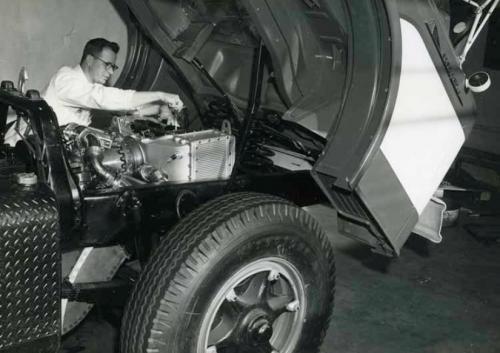
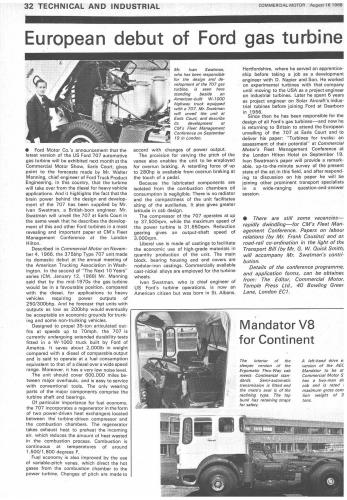
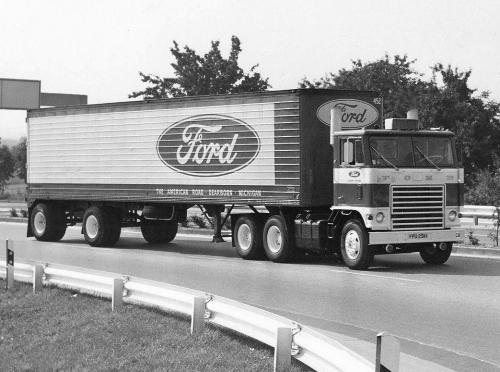
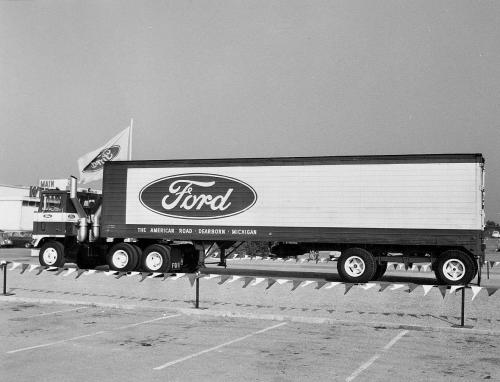
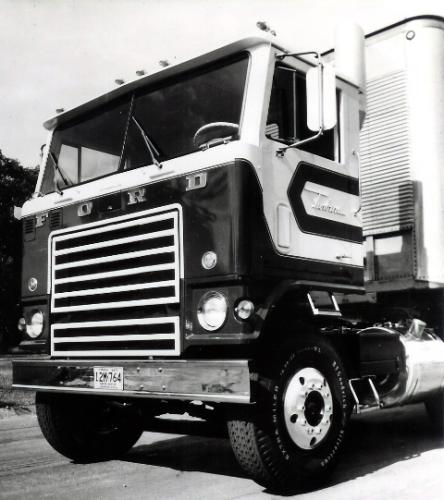
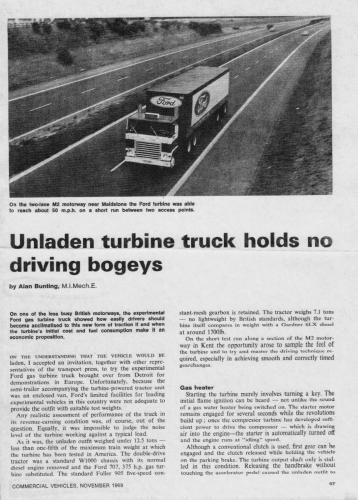
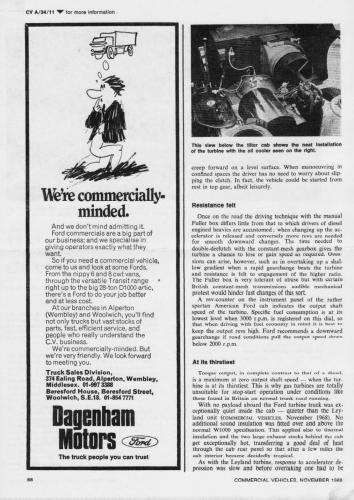
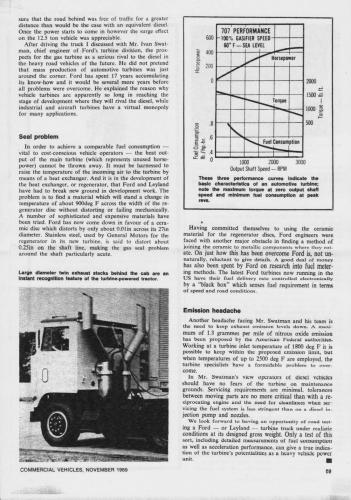
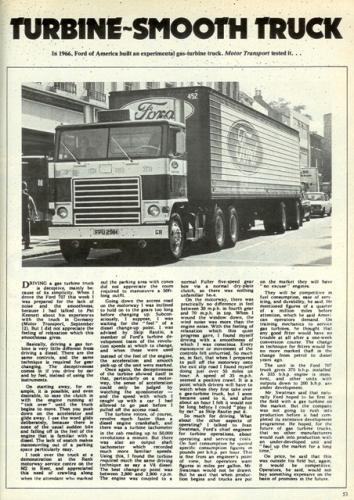
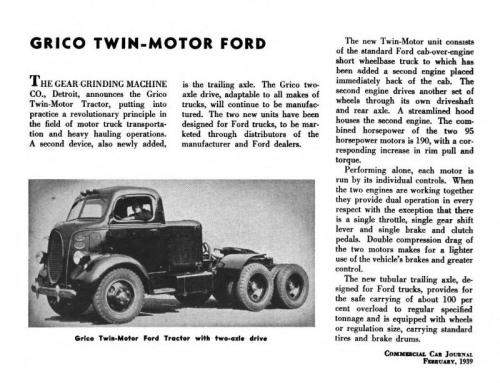
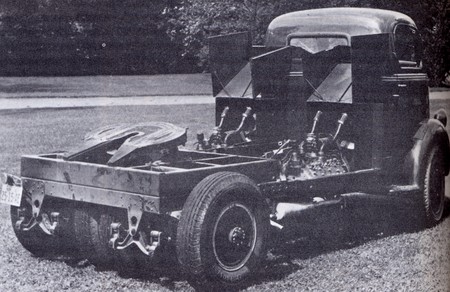
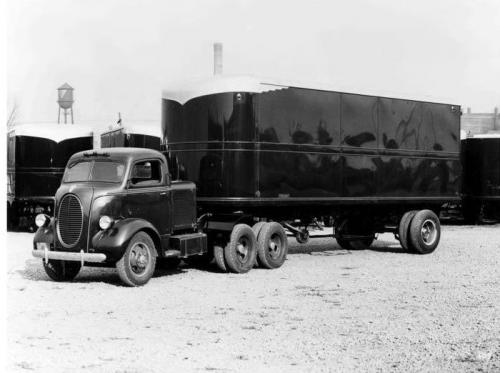
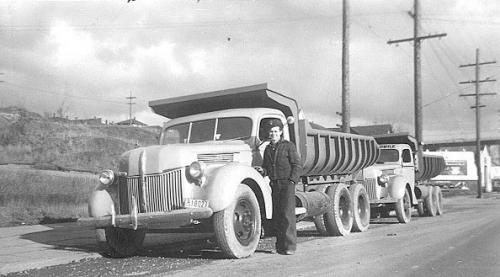
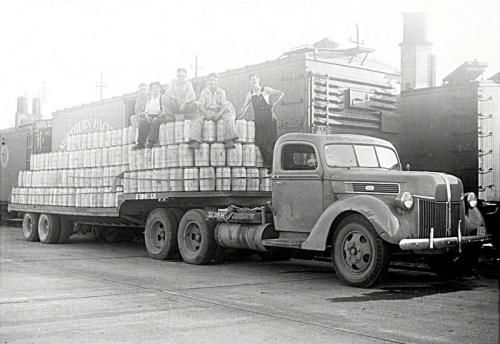
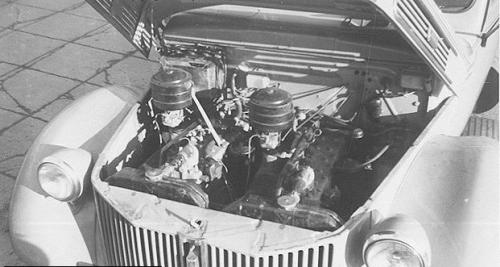
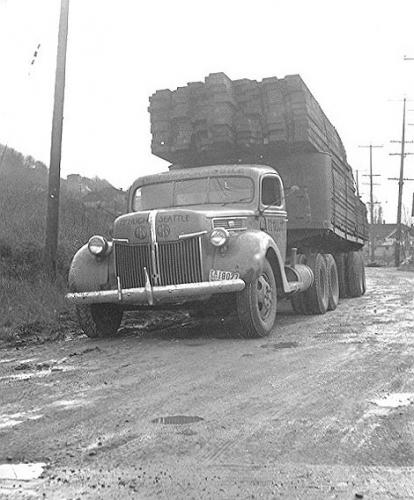
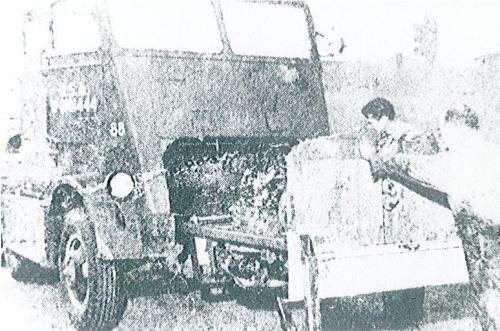
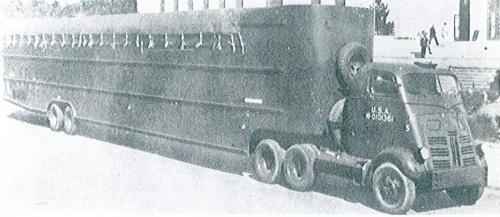
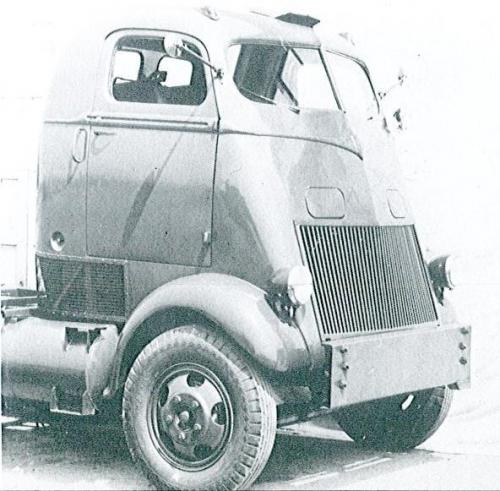
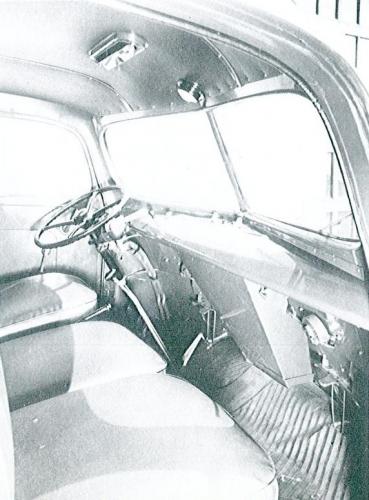
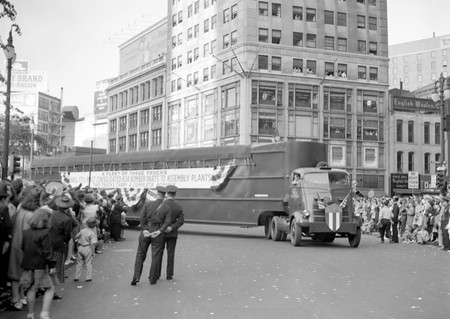
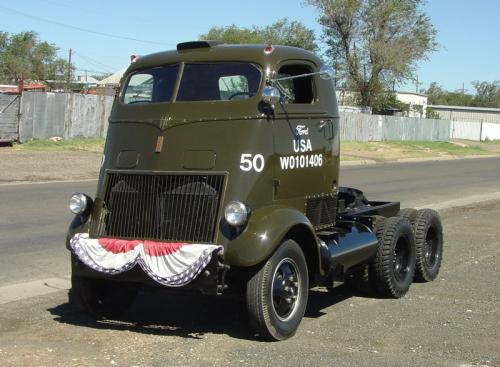
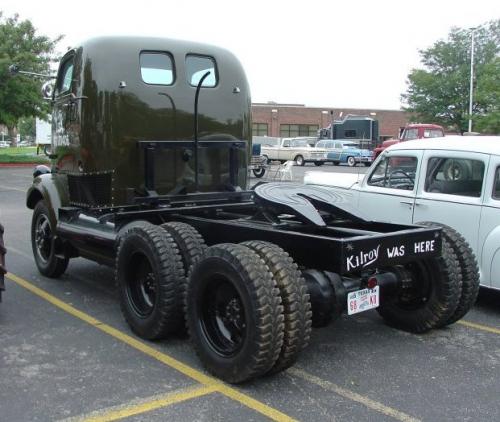
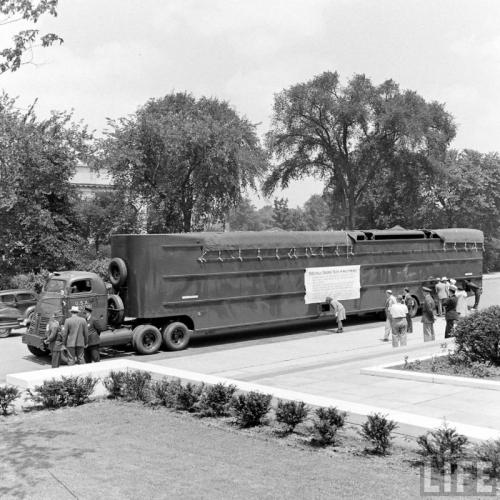
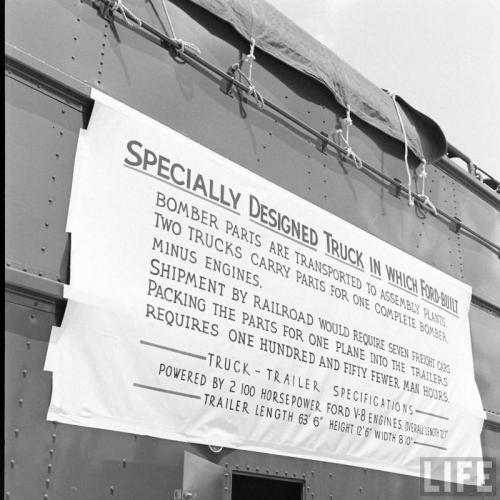
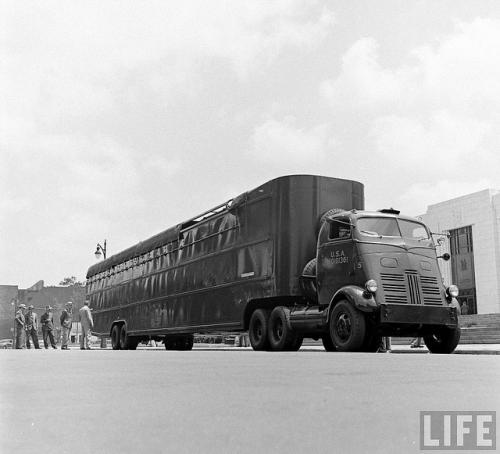
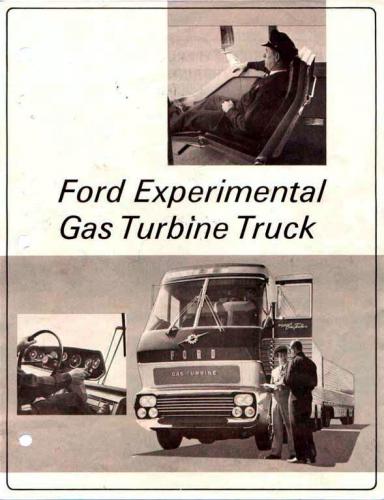
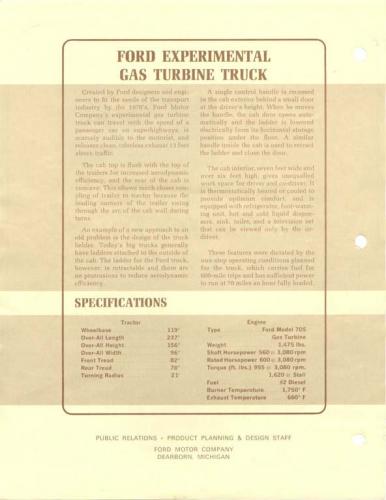
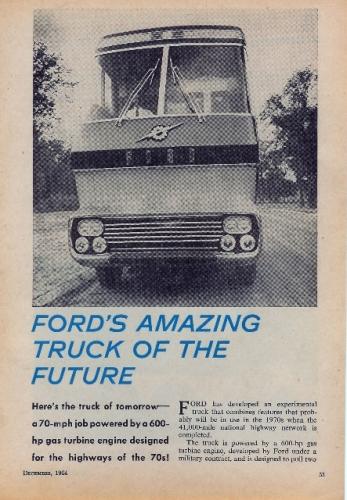
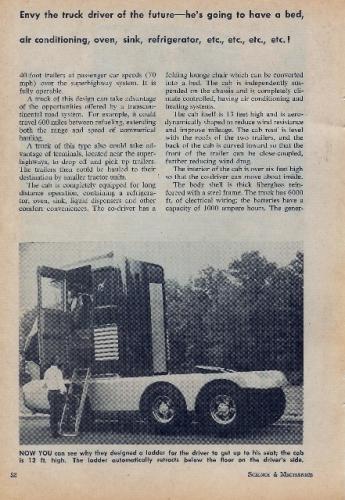
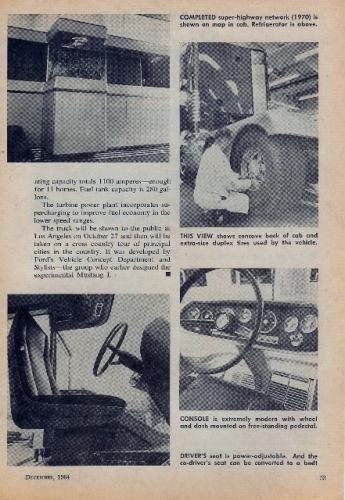
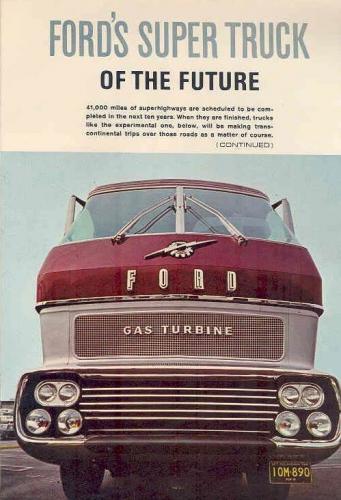
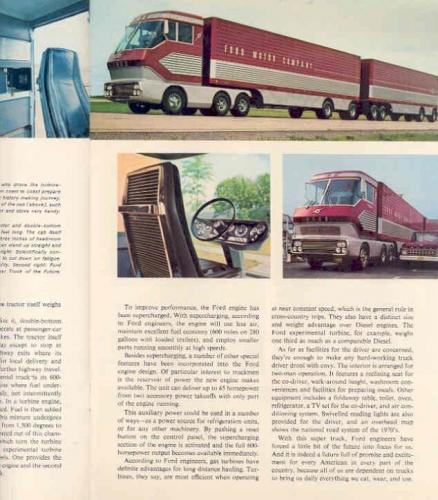
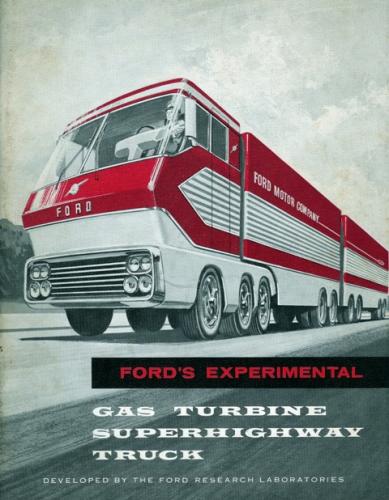
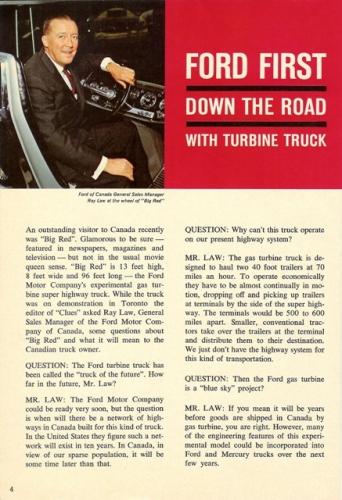
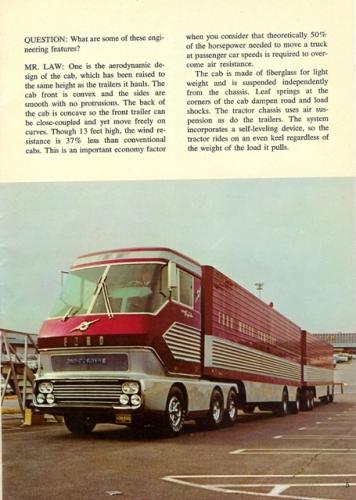
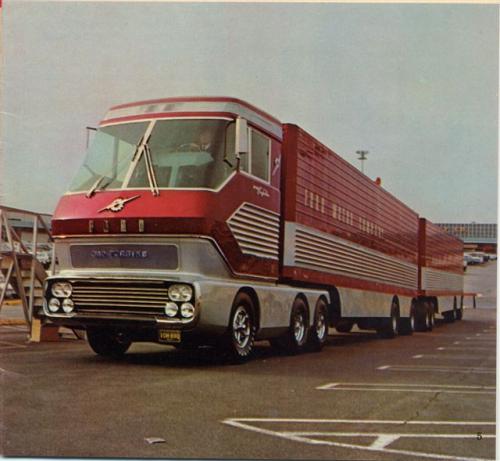
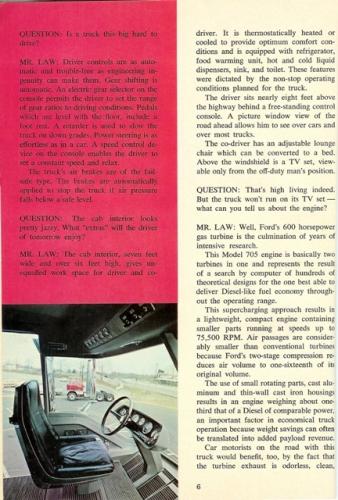
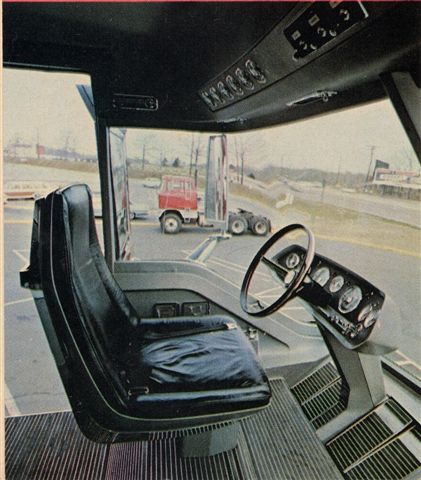
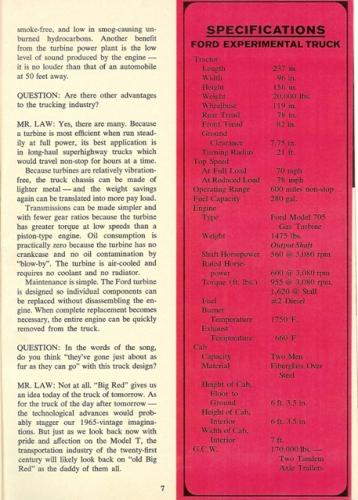
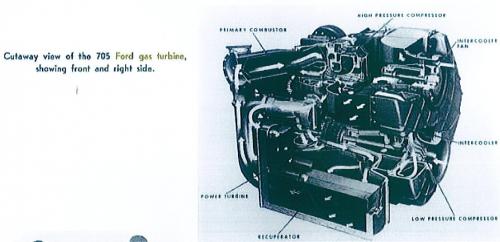
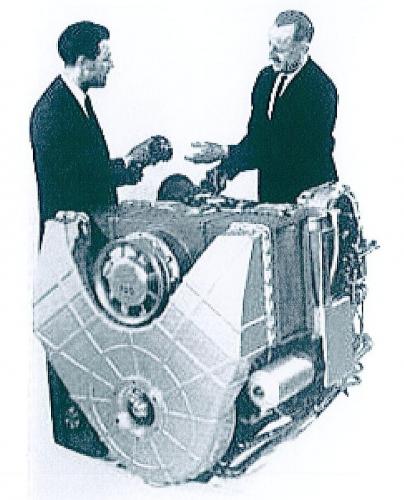
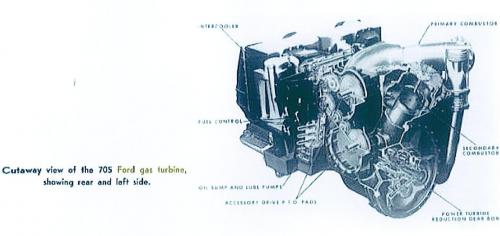
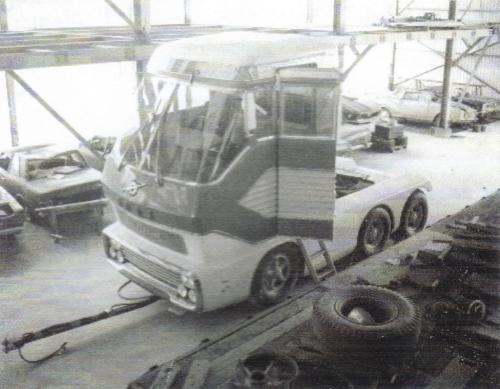
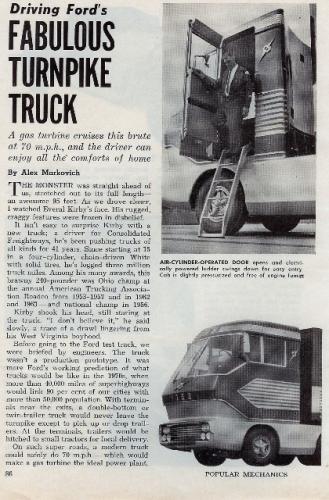
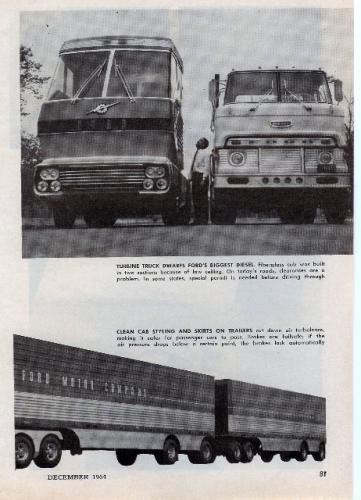
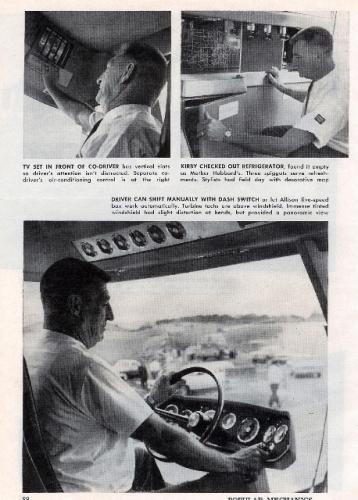
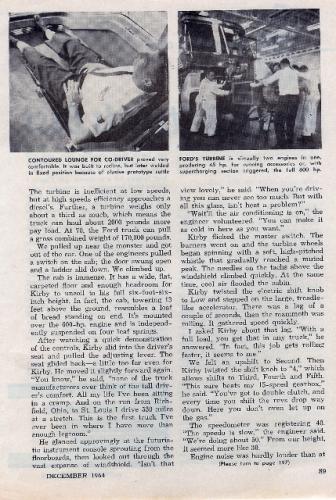
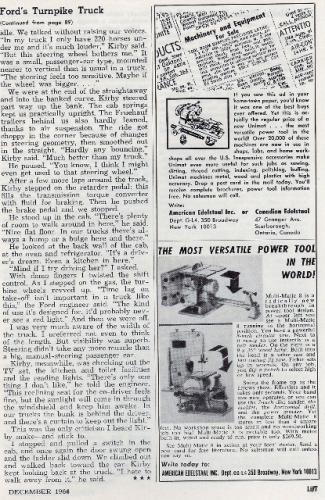
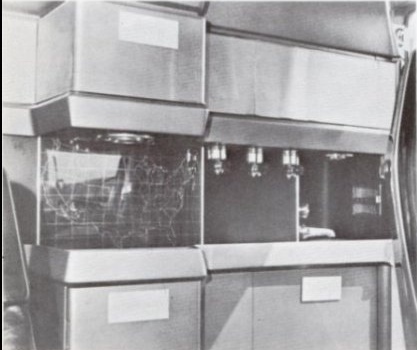
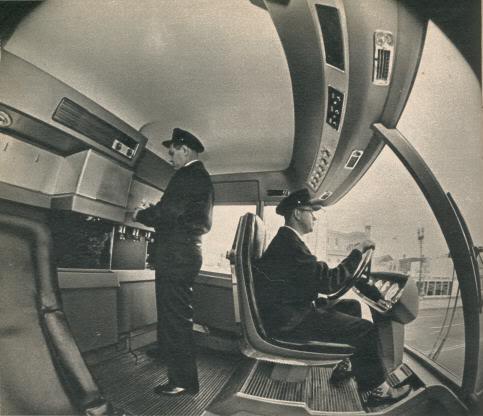
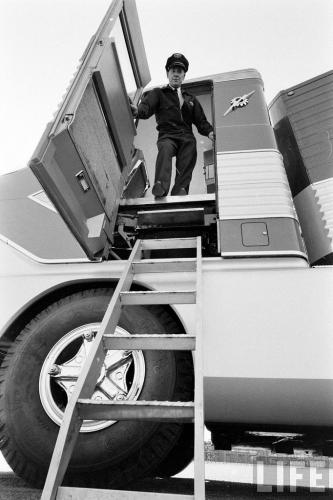
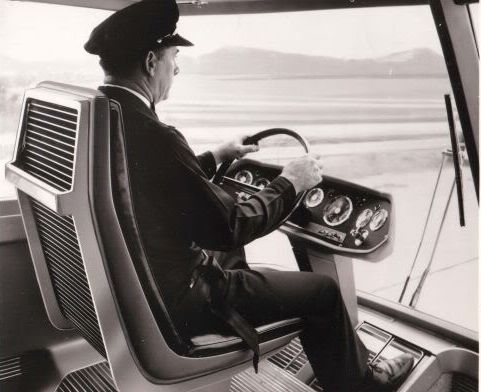
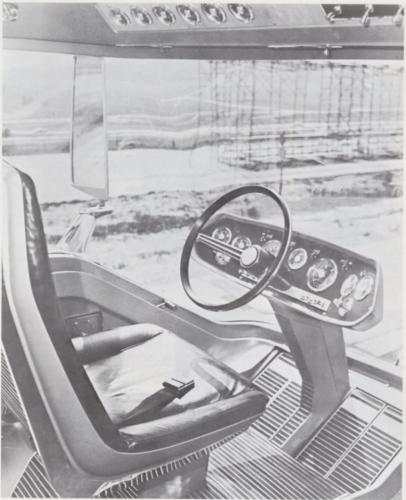
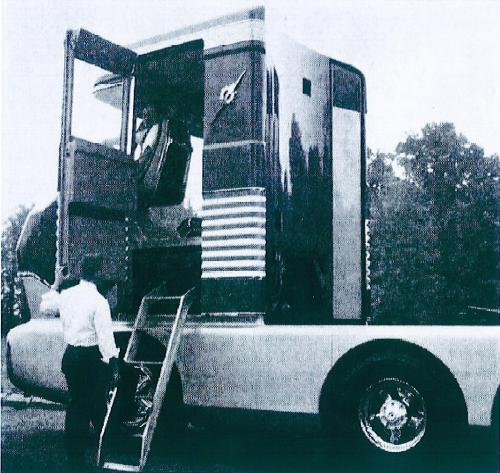
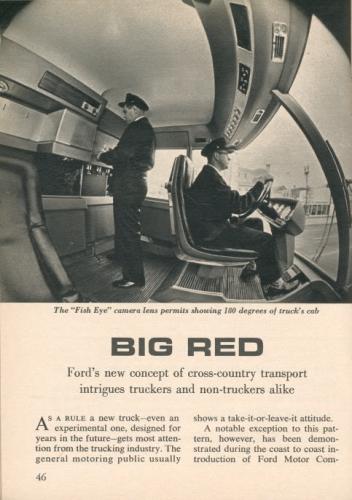
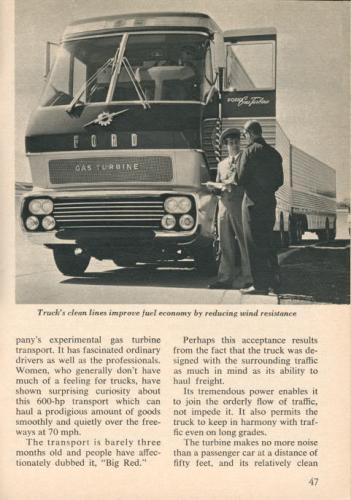
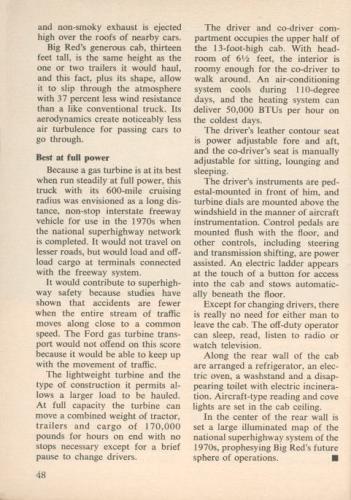
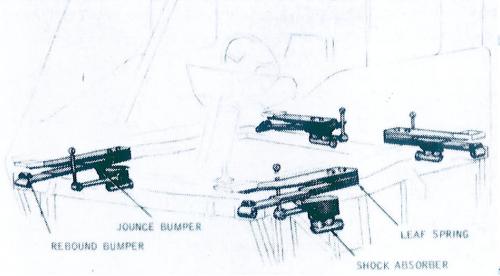
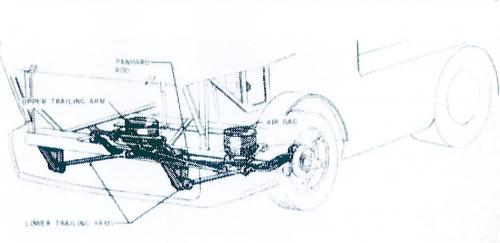
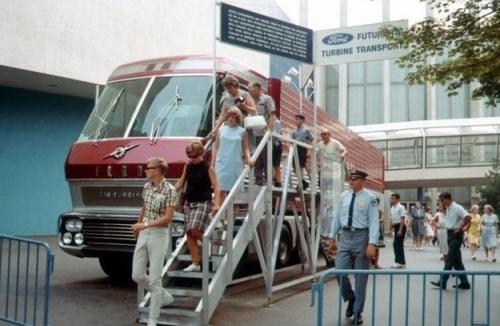
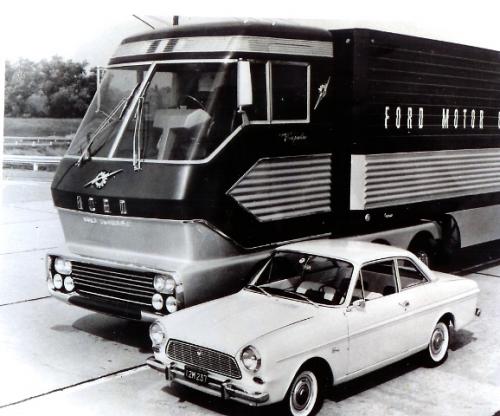
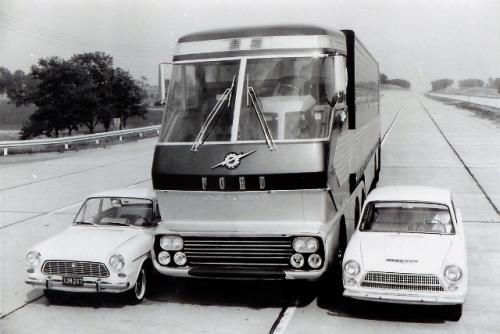
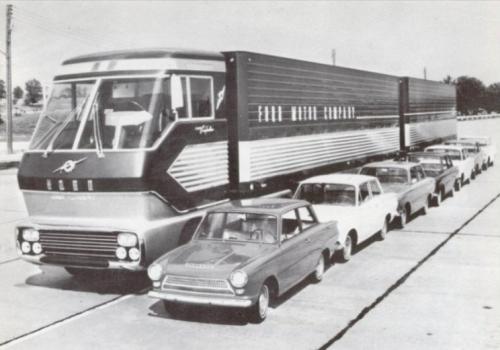
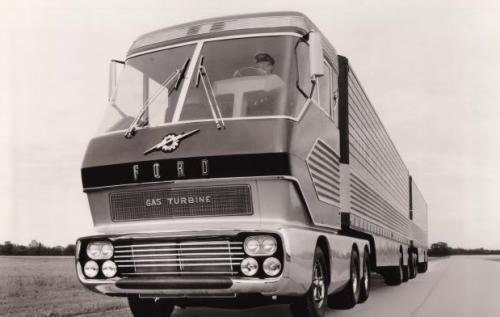
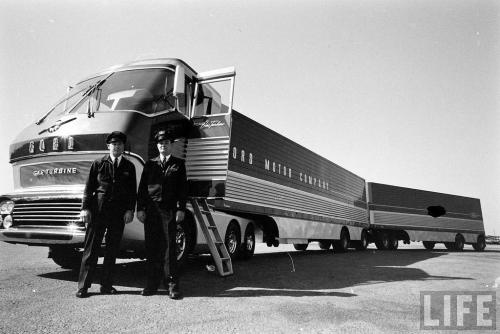
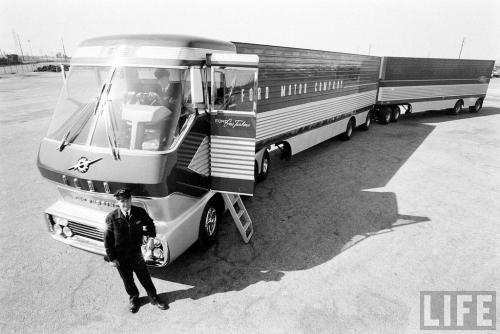
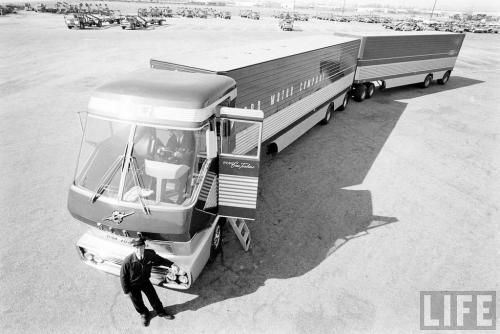
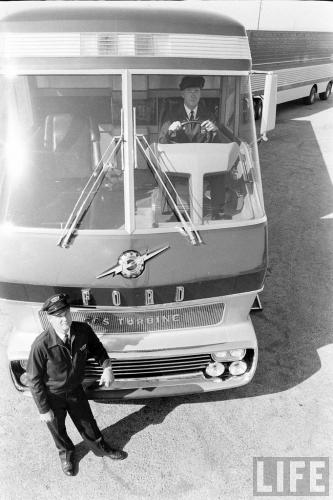
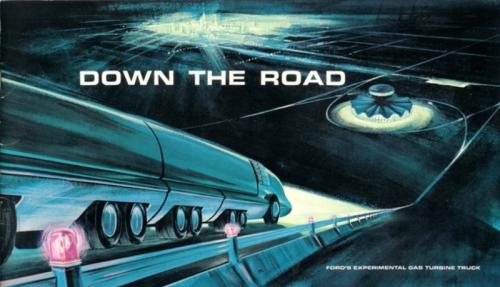
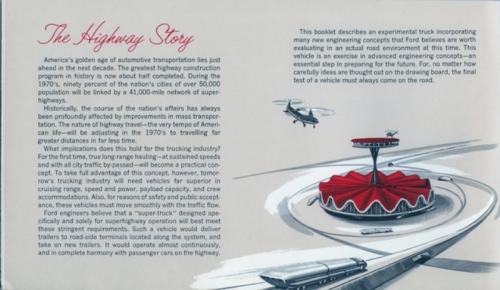
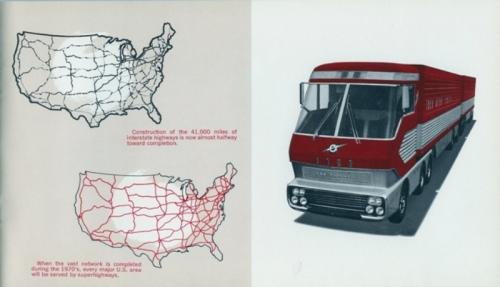
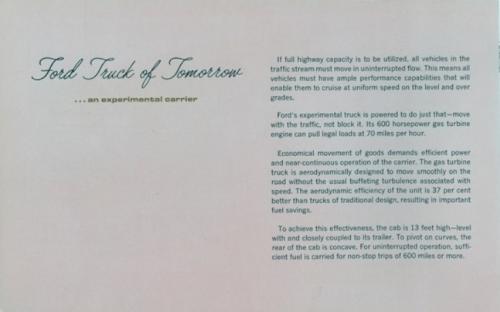
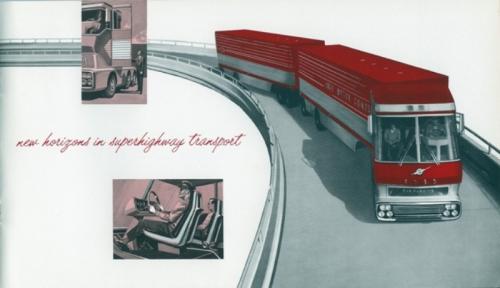
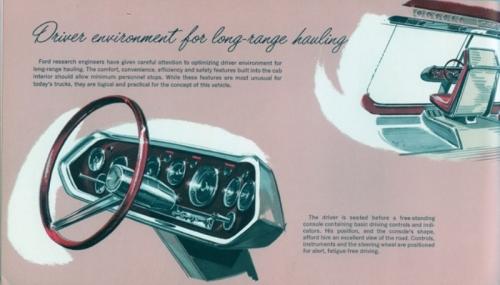
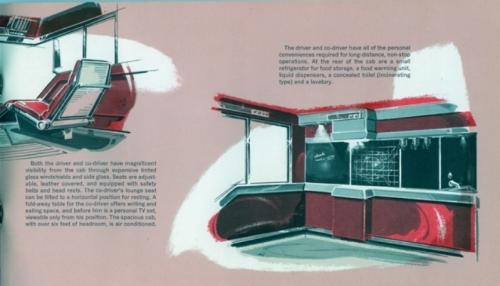
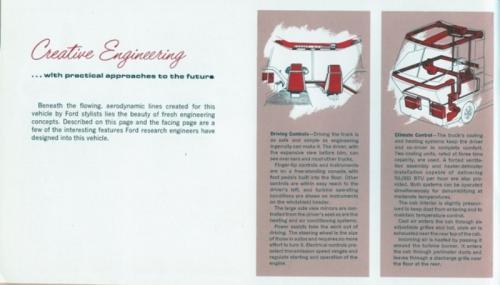
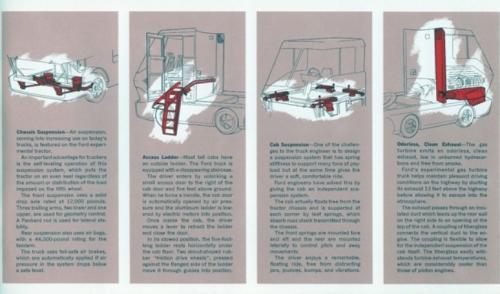
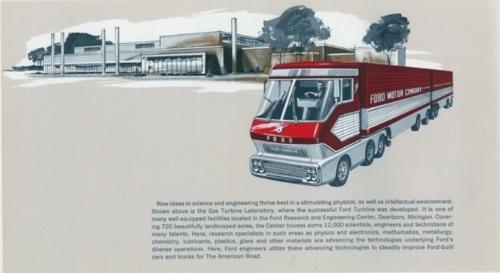

Where was Cummins during the gas-turbine truck race?
in Other Truck Makes
Posted
Cummins partnered with Garrett in 1969, an odd development at the time given the Garrett’s affiliation with Mack Trucks under the Signal Companies.
But Cummins quickly switched partners and work with MAN. However, the Cummins-MAN gas turbine joint venture was soon abandoned with little progress having been made.
_______________________________________________
Cummins Launches Joint Gas Turbine Study
Commercial Motor / January 3, 1969
From Columbus, Indiana, it is announced that the Cummins Engine Company and the Garrett Corporation, one of the Signal Companies, have signed an agreement for a joint program to explore the feasibility of gas turbine applications to highway trucks and construction equipment.
The companies say that recent advances in turbine technology, coupled with the increased speed and weight predicted for future vehicles, along with requirements for less air pollution and reduced noise, may permit the gas turbine to take its place alongside the diesel and petrol engines as an economical power plant for future trucks and construction equipment.
For this project, the two companies will utilize their separate existing skills and technologies to develop commercially successful gas turbine units for these applications.
The Garrett Corporation is a major producer of gas turbines for the aerospace industry.
According to Cummins' president E. Don Tall, and Garrett president Harry Wetzel, "the two companies jointly have a unique competence to determine both the technical and economic feasibility of the gas turbine for heavy-duty truck applications".
Cummins will assemble, sell and service any gas turbine engines developed from the project. Garrett will manufacture and supply turbine power sections, and Cummins will manufacture the balance of the engine.
_______________________________________________
Cummins Will Market Gas Turbines
April 12, 1973
Cummins Engine Co. has signed an agreement with MAN of Augsburg, West Germany to market MAN-produced gas turbines in North America for truck and industrial applications.
MAN is a European maker of heavy machinery, diesel engines, trucks, buses and aircraft turbine engines.
The new gas turbine will be marketing in North America under the Cummins name.
Cummins president Henry B. Schaht said that the company plans to field test engineering prototype turbines in late 1974 with commercial availability in 1977.